Over the past 20 years, there have been many shifts in tattoo industry. The advancements in technology have made tattoos more accurate and less painful, such as microneedle patches tattoos. In collaboration with scientists and engineers, tattoo artists can now create amazing works of art.
Technology has made it possible to have tattoos that don’t need to be permanent. The market is now open to people who might have been afraid to get a tattoo.
The tattoo industry has changed a lot over the years. The advancements in technology have been one of the biggest changes. This technology has made tattooing safer and easier than ever.
New inks, new needles, easier removal, connectivity and IoT integration are some of the notable innovations in tattoo technology. The new inks make tattoos vibranter and more durable. The needles are easier to apply and they’re less painful.
In recent years, the tattoo industry has made great strides. The process for getting a tattoo has become easier and safer thanks to technological advances. There are more choices than ever in choosing a design. Whether you want a traditional tattoo or something more unique, there’s a style and artist out there for you.
Below are top 12 tech-driven tattoos that will be popular in 2023. Ephemeral tattoos can fade in a year and painless microneedle tattoos are also available.
1. Georgia Institute Of Technology offers microneedle patch tattoos
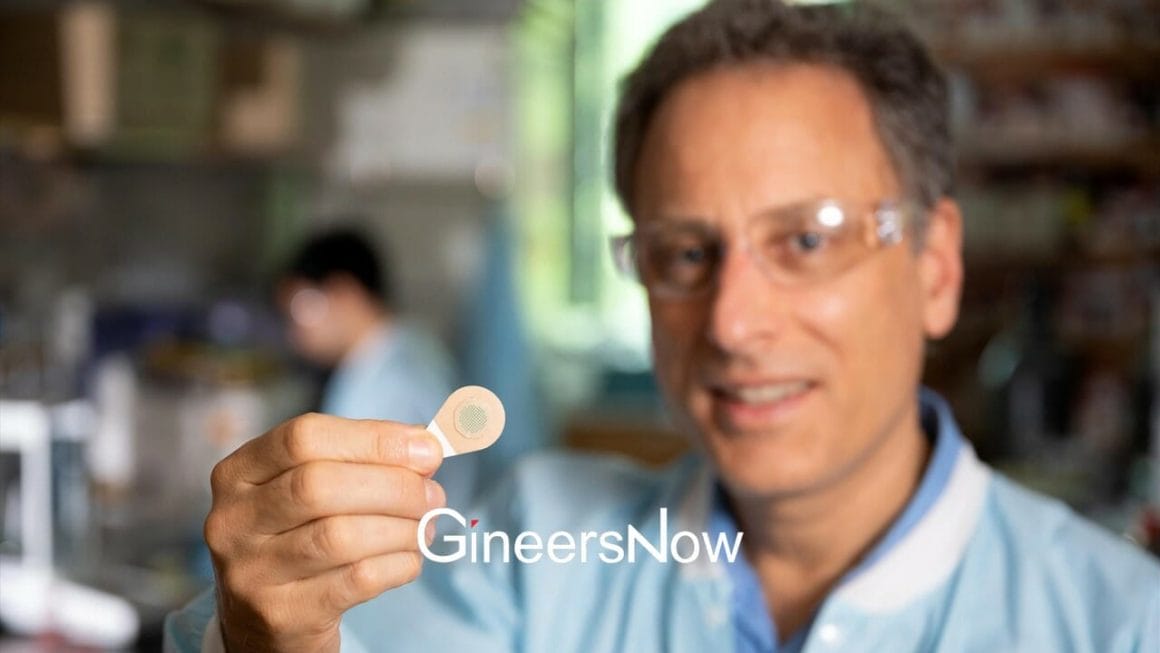
New innovations in tattoo design include microneedle patches. A microneedle tattoo patch has been developed by the Georgia Institute of Technology. This technology makes tattoos easier and takes less time than traditional techniques. People with sensitive skin can also use the microneedle patches.
In the span of the last 20 years, tattooing has moved from being associated only with certain subcultures to being accepted by mainstream culture. To puncture skin, tattoo artists attach a needle to a machine. This is also called the “second layer” of the skin. It is difficult and takes quite a while. The painful, traditional process of tattooing is soon going to be over.
Imagine being able get tattoos without discomfort using skin patches that contain microscopic needles. Instead of having to spend hours in a chair and suffer painful punctures, you can imagine this. Georgia Tech researchers These tattoos can be done by patients themselves. There are many uses for them, such as cosmetics and medical alarms. They can also be used to track neutered animals.
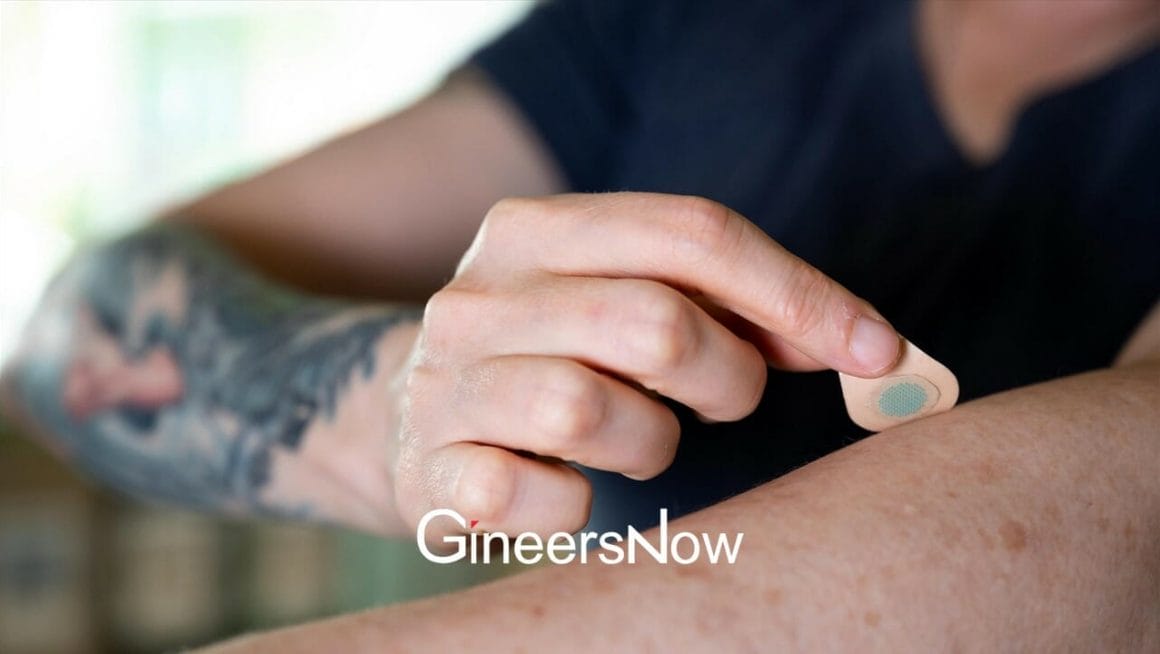 The Georgia Institute Of Technology’s Microneedle Tattoos, GineersNow
The Georgia Institute Of Technology’s Microneedle Tattoos, GineersNowDue to their small size, microneedles are significantly smaller and penetrate the skin less than regular tattoo needles. Mark Prausnitz claims that the microneedle injection is painless for most people. He compares it to the sensation of velcro. Although the latter can feel rough, but the experience does not make them uncomfortable. However, Prausnitz’s team discovered that the platform could be used to conveniently deposit more than just medications under the skin. The microneedle patch is an innovative technology that allows drug delivery and vaccination.
In the medical world, there are many uses for tattoos. This includes concealment and guidance for recurrent radiotherapy treatments for cancer. It also restores breast nipples in the aftermath of breast surgery. As a means of medical identification, people with severe medical conditions, like epilepsy or diabetes, can opt to get tattoos on their wrists.
There are many anti-aging cosmetic products on the market that utilize microneedles for their main delivery method. The development of microneedle technology to tattoos, on the other hand is relatively recent. Prausnitz is an expert in the field. His research has focused on microneedle patches. They are used for delivering medications and vaccines directly to the skin.
The microneedle patches tattoos can imprint any design, including letters, numbers symbols and images. Most microneedle patch used in pharmaceuticals and cosmetics have hundreds or even thousands of microneedles organized within a circle or square. By placing microneedles in certain ways, each microneedle acts like a pixel. This makes it possible to make a tattoo.
Researchers start by working with the mold that holds the microneedles and generates an image. To make the product easy to use, they fill it with tattoo ink. Once the ink has disintegrated, the patch can then be placed on the skin. You can incorporate many colors into microneedles, even black-light tattoo ink. These inks are only visible when they’re exposed to ultraviolet light.
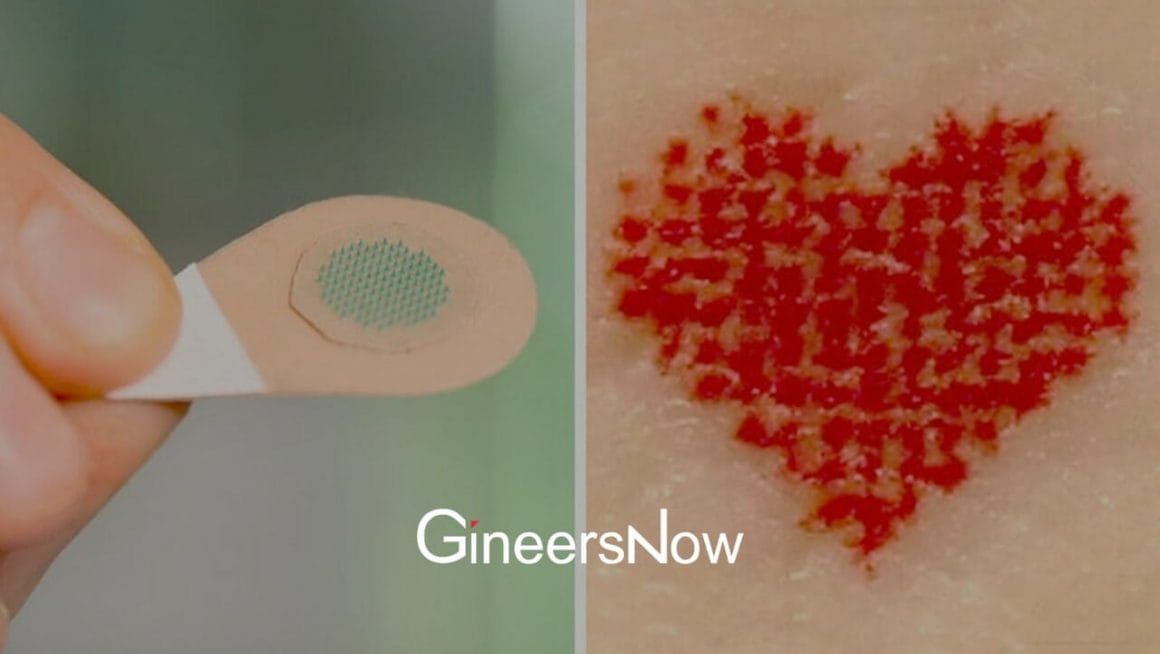 Microneedle Patch Tattoos From The Georgia Institute Of Technology, Mark Prausnitz – GineersNow
Microneedle Patch Tattoos From The Georgia Institute Of Technology, Mark Prausnitz – GineersNowMicroneedles can accept ink of many hues such as black-light or ultraviolet ink. This ink can be used for medical imaging. The microneedles do not penetrate to the deepest layers of skin to protect nerve endings or blood vessels. They are much safer than hypodermic needles and they’re completely painless.
The study found that tattoos can last at most one year, and they are likely to remain permanent. They are therefore considered a viable cosmetic option for those who desire tattoos, but can’t bear the discomfort or infection that traditional tattoos cause.
2. Smart Tattoo Technology
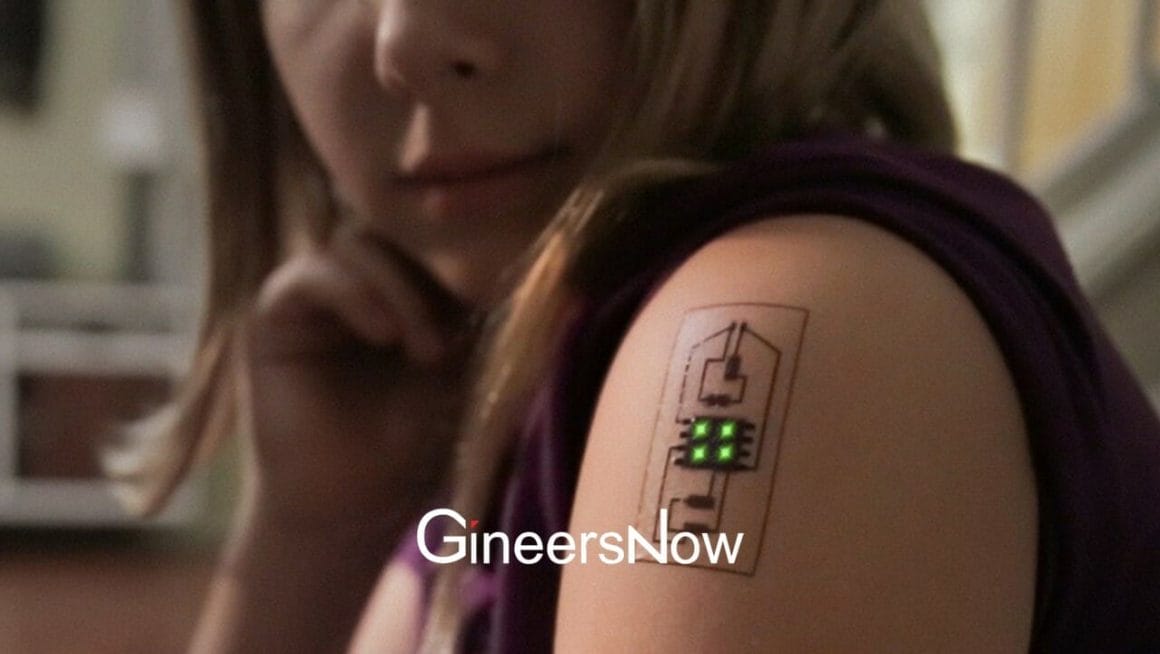 Smart Tattoo Technology (From Ephemeral To Patch Tattoos: 12 Tech Crazy Tats Ideas 2023 – GineersNow Technology Magazine)
Smart Tattoo Technology (From Ephemeral To Patch Tattoos: 12 Tech Crazy Tats Ideas 2023 – GineersNow Technology Magazine)The tattoo industry is embracing a new technology. These new “smart tattoos” are made with special ink that contains sensors and can be used to track health data.
This new technology has many benefits. One benefit is that it helps people suffering from chronic diseases like heart disease or diabetes better track their health. Doctors could also use the data from the tattoos to detect problems before they become serious.
Smart tattoos can also be used to track your fitness. These tattoos are able to monitor activity levels and heart rate, which can assist people in reaching their goals.
Some are concerned about smart tattoos’ safety, however, no adverse side effects have been reported.
3. New Tattoo Gun Technology
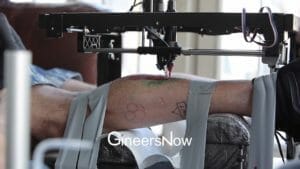 New Tattoo Gun Technology (From Ephemeral To Patch Tattoos: 12 Tech Crazy Tats Ideas 2023 – GineersNow Technology Magazine)
New Tattoo Gun Technology (From Ephemeral To Patch Tattoos: 12 Tech Crazy Tats Ideas 2023 – GineersNow Technology Magazine)The new tattoo gun has the potential to change tattooing and improve safety. A team of engineers designed the gun. It uses a brand new needle type that’s said to have a higher precision than conventional needles.
It is said that the new tattoo gun will also be quieter than conventional tattoo guns. This means it will cause less discomfort to the person receiving the tattoo.
Team behind the latest tattoo gun are currently working to have it FDA-certified. They hope it will become available for purchase within the next few year.
4. Laser tattoo removal
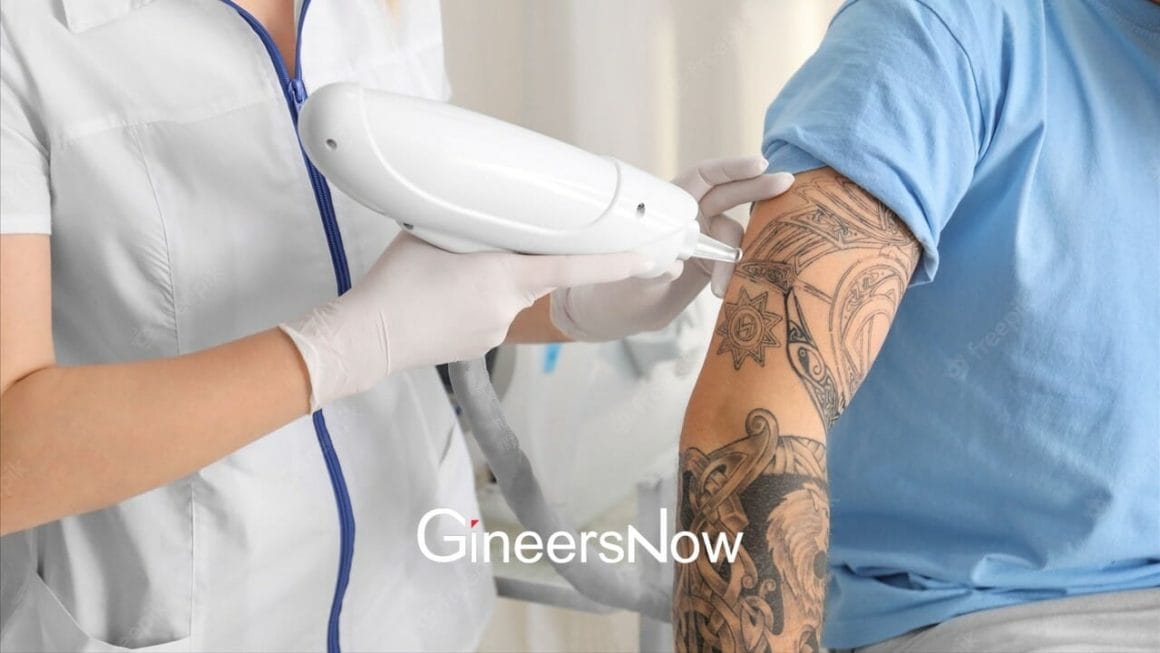 Laser Tattoo Removal (From Ephemeral To Patch Tattoos: 12 Tech Crazy Tats Ideas 2023 – GineersNow Technology Magazine)
Laser Tattoo Removal (From Ephemeral To Patch Tattoos: 12 Tech Crazy Tats Ideas 2023 – GineersNow Technology Magazine)Laser tattoo removal works faster and more effectively than conventional methods like excision, salabrasion, and dermabrasion. This works by breaking down tattoo ink pigments with high-intensity light beams. Laser beam absorbs tattoo pigment and then breaks it down into smaller pieces. These small pieces are then slowly removed by the body’s immune system.
To completely get rid of a laser tattoo, you will need to have several sessions. According to the size and depth of the tattoo, the number of treatments required will vary. The treatment sessions are usually spaced out between 4-6 weeks to give the body enough time to eliminate the excess ink.
Laser tattoo removal is a popular treatment. Most patients report positive results. Most people heal without scarring and discoloration.
5. Tattoo Inks: More Bright and Long-lasting Colours
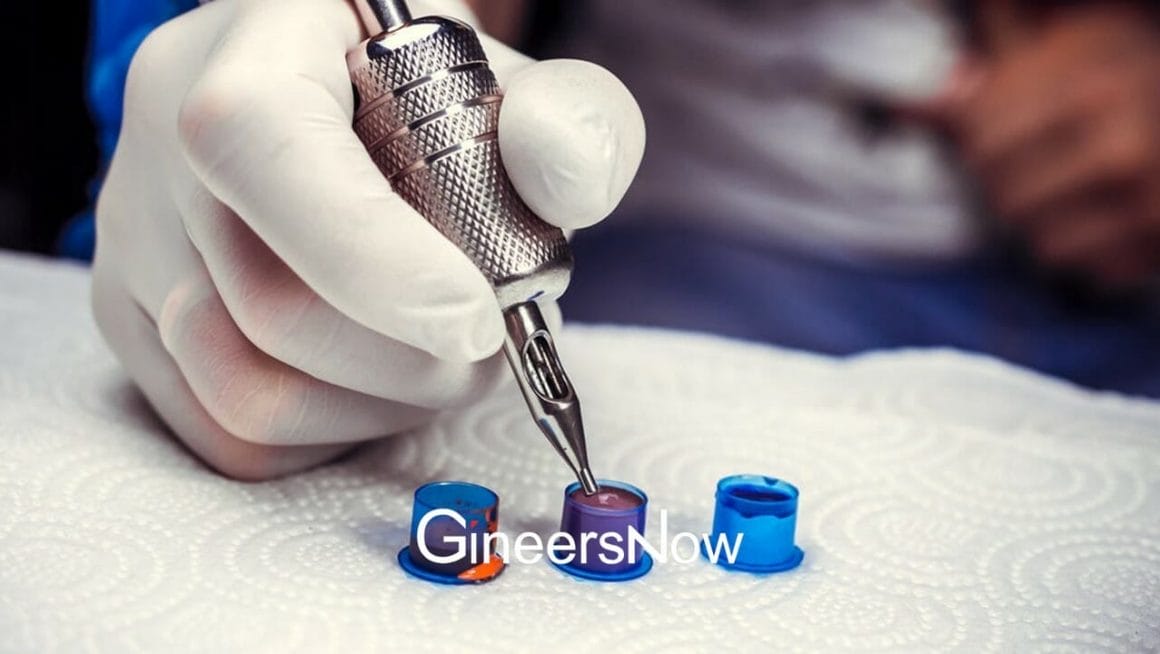 Tattoo Inks Brighter And Longer-lasting Colors (From Ephemeral To Patch Tattoos: 12 Tech Crazy Tats Ideas 2023 – GineersNow Technology Magazine)
Tattoo Inks Brighter And Longer-lasting Colors (From Ephemeral To Patch Tattoos: 12 Tech Crazy Tats Ideas 2023 – GineersNow Technology Magazine)Inks have improved in quality as tattoo art has expanded in recent years. Today’s inks are brighter and longer-lasting than ever before, giving tattoo artists the ability to create beautiful works of art that will stand the test of time.
There are so many options for tattoo inks, and it can sometimes be hard to find the one that suits your style. You can still express yourself with your own style by doing some research.
If you’re looking for a vivid and long-lasting tattoo, be sure to ask your artist about using high-quality inks. These inks will ensure that your tattoo lasts for many years.
6. Tattoos 3D printed: Create your own designs
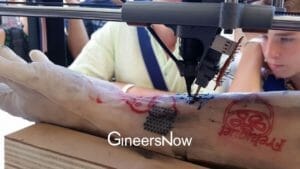 3D Printed Tattoos Custom Designs (From Ephemeral To Patch Tattoos: 12 Tech Crazy Tats Ideas 2023 – GineersNow Technology Magazine)
3D Printed Tattoos Custom Designs (From Ephemeral To Patch Tattoos: 12 Tech Crazy Tats Ideas 2023 – GineersNow Technology Magazine)Engineers at MIT A new type of ink is used to print three-dimensional objects. It’s made of genetically modified living cells.
These cells glow when exposed to different stimuli. After being mixed with hydrogel and nutrients, the cells can be printed one at a time to create interactive, three-dimensional devices.
After that, the group printed a “living tattoo,” which was a thin, transparent patch patterned with live bacteria cells in the shape of a tree. It was a demonstration of their technique. The tree’s branches are lined up with the sensitive cells. If the patch is used on skin that’s been exposed to similar substances before, it will lighten up the affected areas of the tree.
The other group includes researchers University of Minnesota engineers A specialized 3D printer was used to print electronic parts onto the hands of humans.
These electronic “tattoos” could be used for a variety of purposes, including printing temporary sensors on soldiers to detect chemical or biological agents or even acting as solar cells for charging essential electronic devices. One example of the former would be the use of electronic “tattoos” to detect chemical or biological agents.
The low-cost, innovative method can also be used to print cells from biological material on skin wounds in mice. This could open the door to direct printing skin grafts on the field if it is successful.
Researches have explored a range of flexible materials in the past few years to find out if they can be used as the basis for 3D printed inks. For example, scientists have employed inks created from temperature-sensitive polymers to print heat-responsive, shape-shifting things. These inks allow the objects’ shapes to change in response to the temperature. Other photoactivated structures have also been printed using photosensitive polymers. These inks expand or contract depending on the light exposure.
3D printing is different from all other methods in that it can accommodate slight body movements while the process is taking place. The surface of the skin is marked with temporary markers, then it’s scanned. At the same time, the printer employs specialized software to respond to the surface’s motions in real-time, which maintains the integrity of the circuit designs.
7. Temporary tattoos are safer and more realistic alternatives
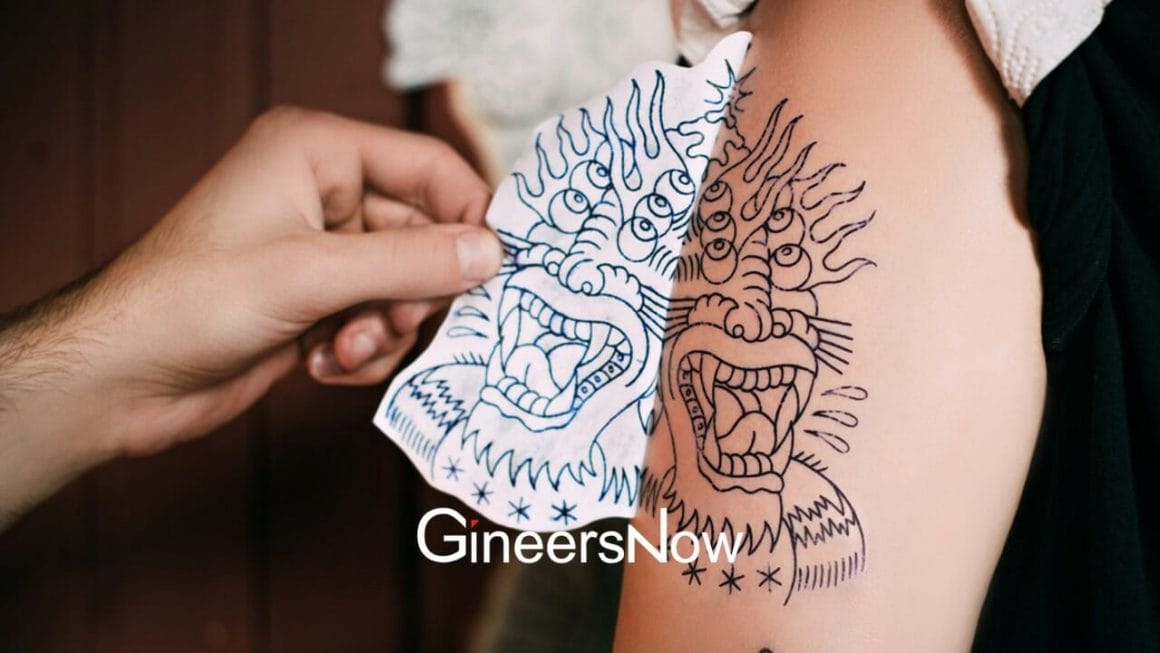 Temporary Tattoos Safer And More Realistic Alternatives (From Ephemeral To Patch Tattoos: 12 Tech Crazy Tats Ideas 2023 – GineersNow Technology Magazine)
Temporary Tattoos Safer And More Realistic Alternatives (From Ephemeral To Patch Tattoos: 12 Tech Crazy Tats Ideas 2023 – GineersNow Technology Magazine)People are seeking ways to express their individuality and personality as the summer approaches and temperatures rise. Temporary tattoos are a popular option.
Although temporary tattoos might seem new, they are actually a centuries-old trend. Actually, the 2000 BCE was actually when a temporary tattoo first appeared in Egypt. The first tattoo was made using pigment applied to the skin by sharpening an instrument.
There are so many temporary tattoos on the market today. They are safer and look more real than ever. These are an excellent alternative for anyone who wants to express their personalities without making a commitment.
For people who have sensitive skin, allergies, or are unable to get permanent tattoos done right away, temporary tattoos can be a good option. You can remove them if they are irritating or trigger an allergic reaction.
8. Wearable tech: Incorporated into tattoos
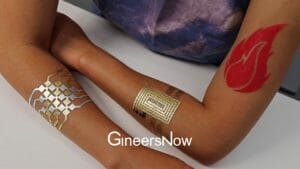 Wearable Technology Integrated Into Tattoos (From Ephemeral To Patch Tattoos: 12 Tech Crazy Tats Ideas 2023 – GineersNow Technology Magazine)
Wearable Technology Integrated Into Tattoos (From Ephemeral To Patch Tattoos: 12 Tech Crazy Tats Ideas 2023 – GineersNow Technology Magazine)Wearable technology It is becoming more popular to use technology in everyday living as people search for new ways to make it part of their lives. The wearable technology tattoo, or temporary tattoo that connects to your phone or another device, is one of the newest trends.
The conductive ink used for wearable technology tattoos can be used to monitor fitness, play music, or send texts messages. These tattoos can last as long as two weeks and are just like regular temporary ones.
Some people might be reluctant to get a tattoo even though it is temporary. However, they reap the many health benefits. wearable tech Tattoos can be more beneficial than the potential risks. This is because unlike other fitness trackers, you don’t need to worry about damaging or losing your device. And because the tattoos are powered by your body’s natural movement, they can last for days or even weeks without needing to be recharged.
9. Augmented Reality Tattoos
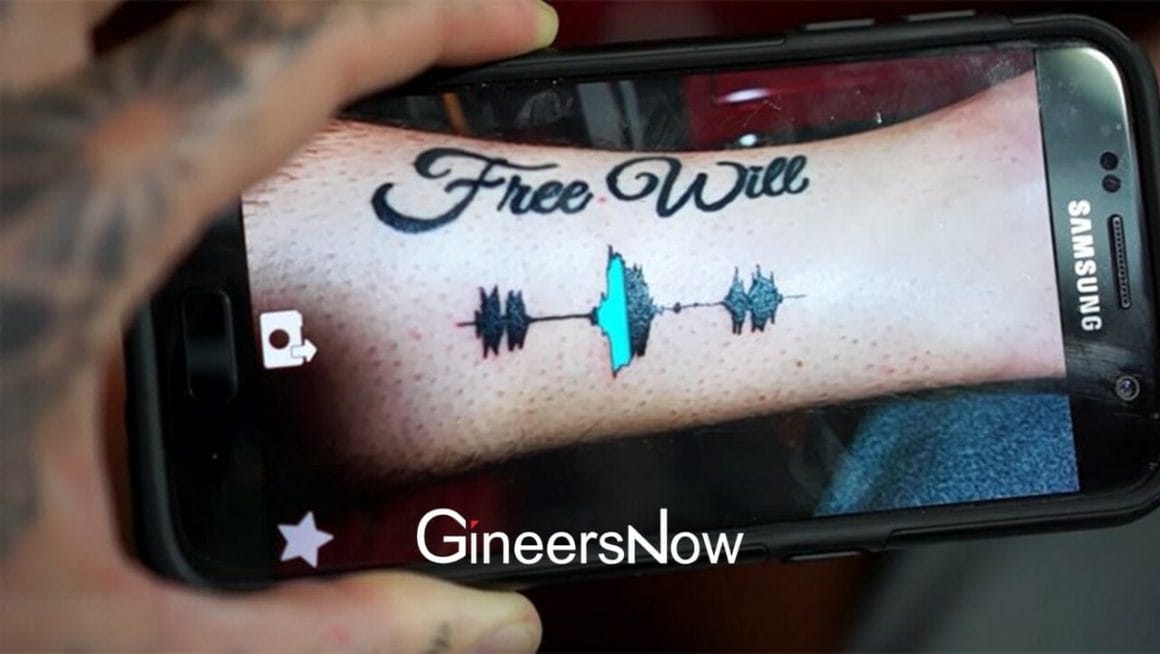 Augmented Reality Tattoos Interactive Designs (From Ephemeral To Patch Tattoos: 12 Tech Crazy Tats Ideas 2023 – GineersNow Technology Magazine)
Augmented Reality Tattoos Interactive Designs (From Ephemeral To Patch Tattoos: 12 Tech Crazy Tats Ideas 2023 – GineersNow Technology Magazine)Technology advances as does our ability to express ourselves through art. Augmented reality tattoos are the latest trend in body art, and they’re only getting more popular.
Because they are interactive, these tattoos have special qualities. You can use your smartphone to scan the tattoo and then see it live on screen.
This is perfect for people who want a tattoo that’s unique to them and that reflects their personality. Whether it’s a simple design or something more complex, an augmented reality tattoo is sure to turn heads.
10. Ephemeral Tattoo: Disappearing Tattoos After 1 Year
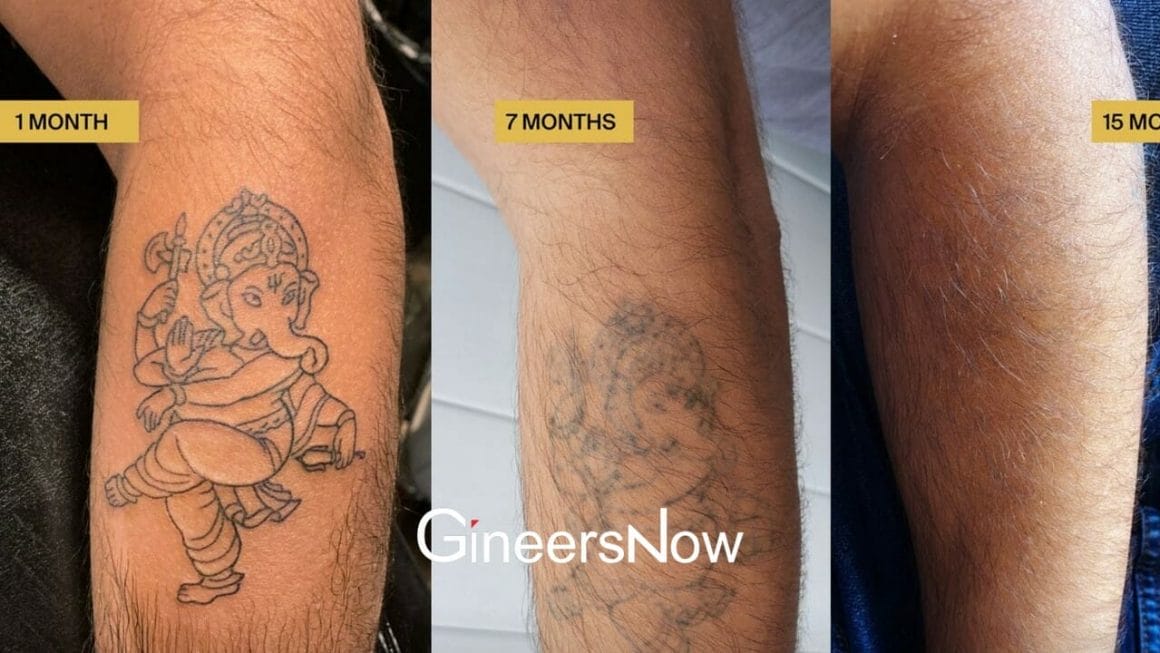 Ephemeral Tattoo Technology: Disappearing Tattoos After 1 Year (From Ephemeral To Patch Tattoos: 12 Tech Crazy Tats Ideas 2023 – GineersNow Technology Magazine)
Ephemeral Tattoo Technology: Disappearing Tattoos After 1 Year (From Ephemeral To Patch Tattoos: 12 Tech Crazy Tats Ideas 2023 – GineersNow Technology Magazine)People are increasingly opting for tattoos that don’t last. These so-called “ephemeral tattoos” are applied using a special ink that fades away after a period of time, typically one year.
You may see your tattoo fade if the tattoo artist uses inks that are inferior. Choose a parlor with high-quality, inks if this is what happens.
A more serious note: cutting-edge technology has developed methods to eventually allow tattoos that fade over time.
It is important to note that “real tattooing” adherents do not consider this style of body modification to be “tattooing,” but it is possible that those who would not normally contemplate getting a “permanent” tattoo would be interested in trying it out.
Many companies are now producing tattoos that last for up to five years due to technological advancements. It is specially formulated so that the ink will fade naturally within the specified time frame.
This method has its drawbacks. Here are two:
At this point, it is only possible to provide an estimate on the length of time a “disappearing” tattoo will remain visible. These types of tattoos are for people who know they will not be able to see their chosen design for as long or sooner than expected.
A faded tattoo is gradually less obvious and will eventually look less appealing over time. It can be difficult to predict how long this tattoo design will remain in good condition.
Recent years have seen significant progress in the area of quick-term tattoos. I am looking forward to seeing any further developments in this field over the coming years.
As of now, and despite all the discussion that has taken place over the last decade or so on this subject, we have yet to see any inks that meet our standards before considering using them.
An ephemeral tattoo can be chosen for many reasons. It is a temporary tattoo that can be used to check out the design and placement of a permanent one. It could be because of personal preference or restrictions in employment.
Ephemeral tattoos, whatever their reason, are growing in popularity. There are many options for people who want to try one. If you’re considering getting an ephemeral tattoo, be sure to do your research and find an experienced artist who can create the perfect design for you.
11. You can get tattoos that glow when it is dark
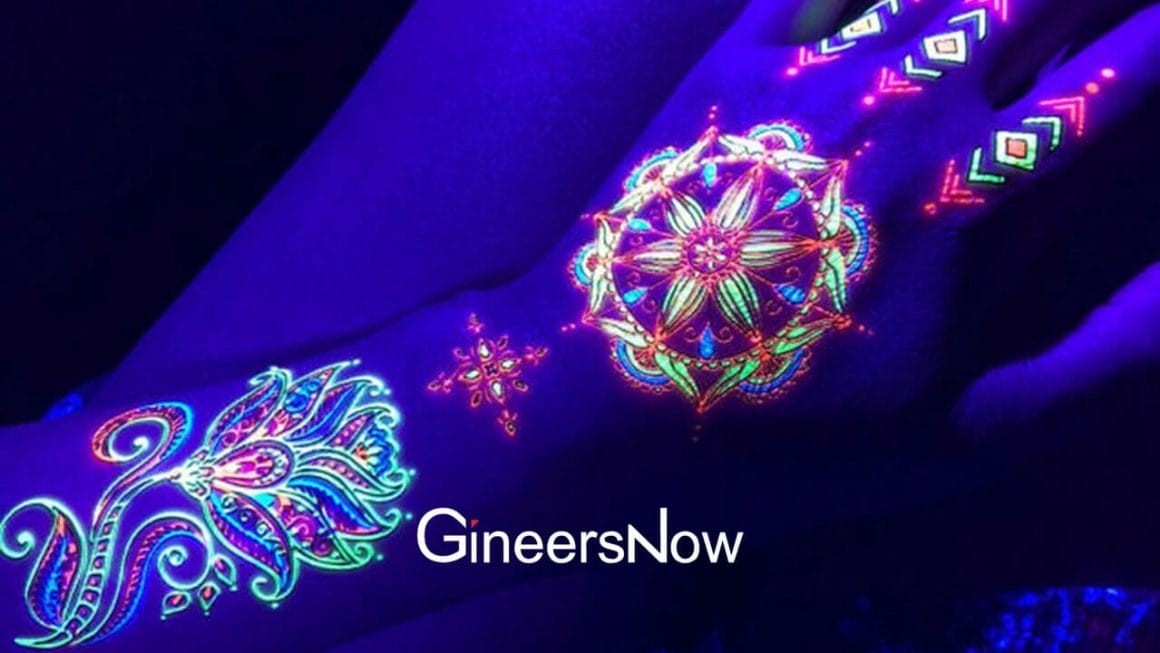 Tattoos That Glow In The Dark (From Ephemeral To Patch Tattoos: 12 Tech Crazy Tats Ideas 2023 – GineersNow Technology Magazine)
Tattoos That Glow In The Dark (From Ephemeral To Patch Tattoos: 12 Tech Crazy Tats Ideas 2023 – GineersNow Technology Magazine)It is not only one of most beautiful tattoos but also one of least popular. The glow-in-the-dark tattoo is unique because it is made using a special type of ink that glows when it is exposed to dark.
The glow-in-the dark tattoos are a cover-up that can be revealed during the day but kept hidden at night. They’re a good choice for people who wish to be professionals, but don’t know that tattoos would be considered inappropriate. To create a nocturnal glow and make your skin glow in the dark, glow-in-the–dark tattoos use phosphorus ink. While regular tattoos have ink made out of metals, glow-in the-dark tattoos have phosphorous ink.
Tattoos which glow in the dark are different to tattoos that glow under black light
Black light tattoos also have similar effects to the glow-in-the dark tattoos. UV ink can be used to make these tattoos. It is ink which sparkles when exposed to ultraviolet light. These tattoos are very popular with rave goers and clubgoers. Contrary to glow-in the-dark tattoos that can be seen in dark places, black light tattoos are not visible in darkness unless they have been lit with a black light. Black light tattoos are more appropriate for those who wish to hide their tattoos while they sleep.
You will require a black light to use the ink. The ink in the two tattoos cannot be seen under normal lighting. This is why applying UV and glow-in-the dark ink tattoos can be more difficult and takes longer. Also, glow-in the-dark tattoos can be more expensive.
12. Tattoo Inking for Health Monitoring Tattoos
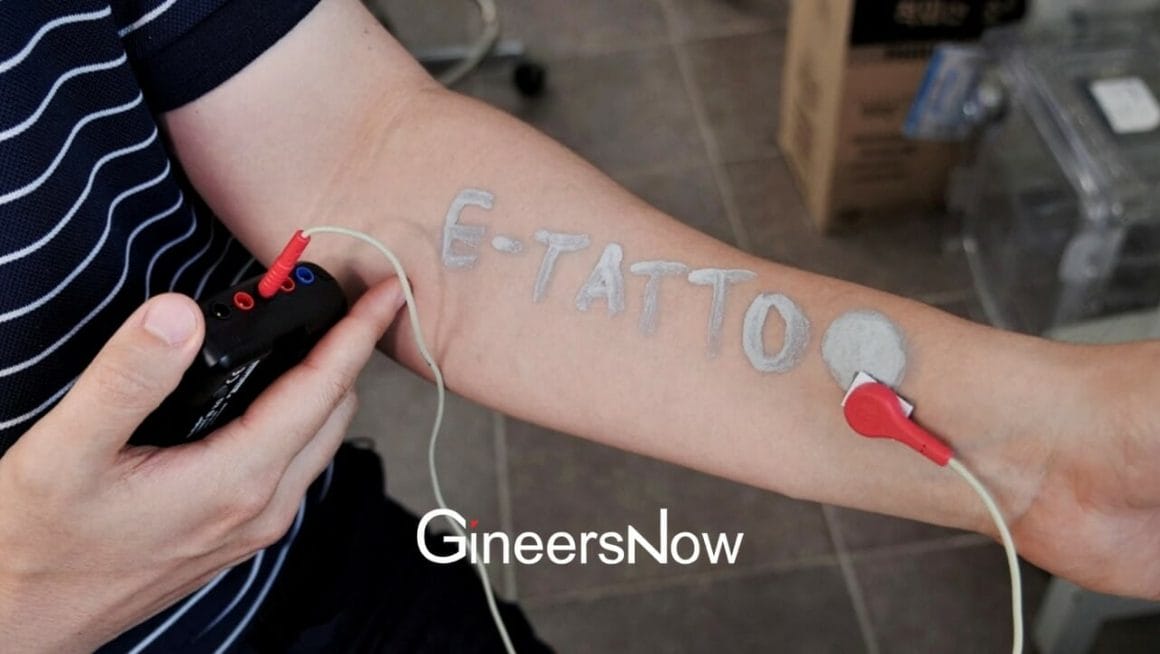 Tattoo Inking For Health Monitoring Tattoos (From Ephemeral To Patch Tattoos: 12 Tech Crazy Tats Ideas 2023 – GineersNow Technology Magazine)
Tattoo Inking For Health Monitoring Tattoos (From Ephemeral To Patch Tattoos: 12 Tech Crazy Tats Ideas 2023 – GineersNow Technology Magazine)New “e-tattoos” that is capable of monitoring a person’s health has been developed by South Korea has many researchers.
These days, it is more frequent to see people inserting electronic devices into their bodies. The digital implants can perform a variety of functions, such as enabling mobility, payment for goods, opening doors and saving data. Researchers from Korea Advanced Institute of Science and Technology applied a similar idea to health monitoring. But their approach is much less intrusive than that of the preceding.
By combining liquid metal and carbon-nanotubes, the researchers created an electronic ink tattoo.
The electronic tattoo keeps track of the wearer’s vital signs, such as blood sugar levels and heart rate, and sends a warning to the user whenever it detects something that doesn’t seem quite right. It is also possible for biosensors to be connected to a user’s vital data over time, which may then be utilized to track patterns or problems.
According to Professor Steve Park, the head of the study, “What we intend to accomplish in the future is attach a wireless chip integrated with this ink, so that we may communicate, or send messages back and forth between our bodies to an external device.”
Ink is made up of pieces that have been based on gallium, a malleable metal that is used in semiconductors as well as carbon nanotubes. The platinum coating on these carbon nanotubes makes them both durable and conductive.
Ink creates an electric circuit on the skin’s surface. You can link the ink to an electrocardiogram (ECG), which monitors the activity of your heart. It also has sensors to analyze sweat. The ink can be used to warm the skin for physiotherapy purposes.
Gallium was used as the liquid metal to make the ink. It is soft and silvery, making it a good alternative to mercury. To make the ink, researchers used gallium.
Advanced Materials published the July issue with the results of their research. Although the current e-tattoo only provides readings when connected to an external biosensor at this time, further study is planned to make the device more accurate.
Takeaway: Future of Tattoo Technology
The future of tattoo design is bright and exciting. New developments in biotechnology as well as nanotechnology could make tattoos more real and lifelike. They could also be used for medical purposes, such as monitoring patients’ health or delivering drugs. Tattoo technology advances at an incredible rate, such as the. Tattoos with microneedle patchesIt can be used in many ways.
Technology is always evolving. It used to be difficult for some people to make such a decision. The future of tattooing looks bright with new ink formulations, and improved needle designs. So if you’re thinking about getting inked, don’t wait – the future of tattoo technology is now.
Editor’s Note
You can get everything from patch tattoos to ephemeral tattoos
The tattoo industry has seen many technological advances over the past few years. One of the biggest advances has been in painless microneedle patches tattoos and inks. The new inks available are more safe and vibrant than ever, as well as disappearing and glow-in the-dark. There are also new tattoo machines that offer more control and less pain.
Technology’s Impact On The Tattoo Industry
Technology has made tattooing a lot easier in recent years. To get a tattoo used to be a difficult, time-consuming task. Modern equipment makes it possible to get a tattoo done in minutes. The popularity of tattoos has increased exponentially.
The development of painless microneedle tattoos and laser removal tools is one of the biggest technological advances to tattooing.
The Traditional and New Tattooing Techniques
The art of body painting has existed for many centuries. People have used many different techniques and methods to achieve their designs. The use of traditional methods such as hand-poked and machine tattooing has been popular for many years. Recent years have seen new technology, such as laser tattoo removal. Painless, microneedle tattoos You can also get 3D tattoos.
Technology in Tattooing: The Benefits and Cons
Tattooing has grown in popularity over the years. As tattoos have become more popular, so has the use of technology. You can get painless tattoos with microneedle patches It comes down to tattooing. There are many ways you can get tattooed, each with its own pros and cons.
Technology’s Future in Tattoo Industry
Technology is also growing in popularity with the tattoo industry. Today’s tattoo artists are using cutting-edge equipment and techniques like Tattoos with microneedle patches It is possible to make unique, realistic designs. This trend will only continue for many years. Here’s a look at some of the exciting innovations that are helping to shape the future of this dynamic industry.
Technology advances are inevitable in tattooing and they have had an impact on tattooing as a whole. While there are pros and cons, each artist can decide what they will do with this technology.
You can click below to view the magazine

